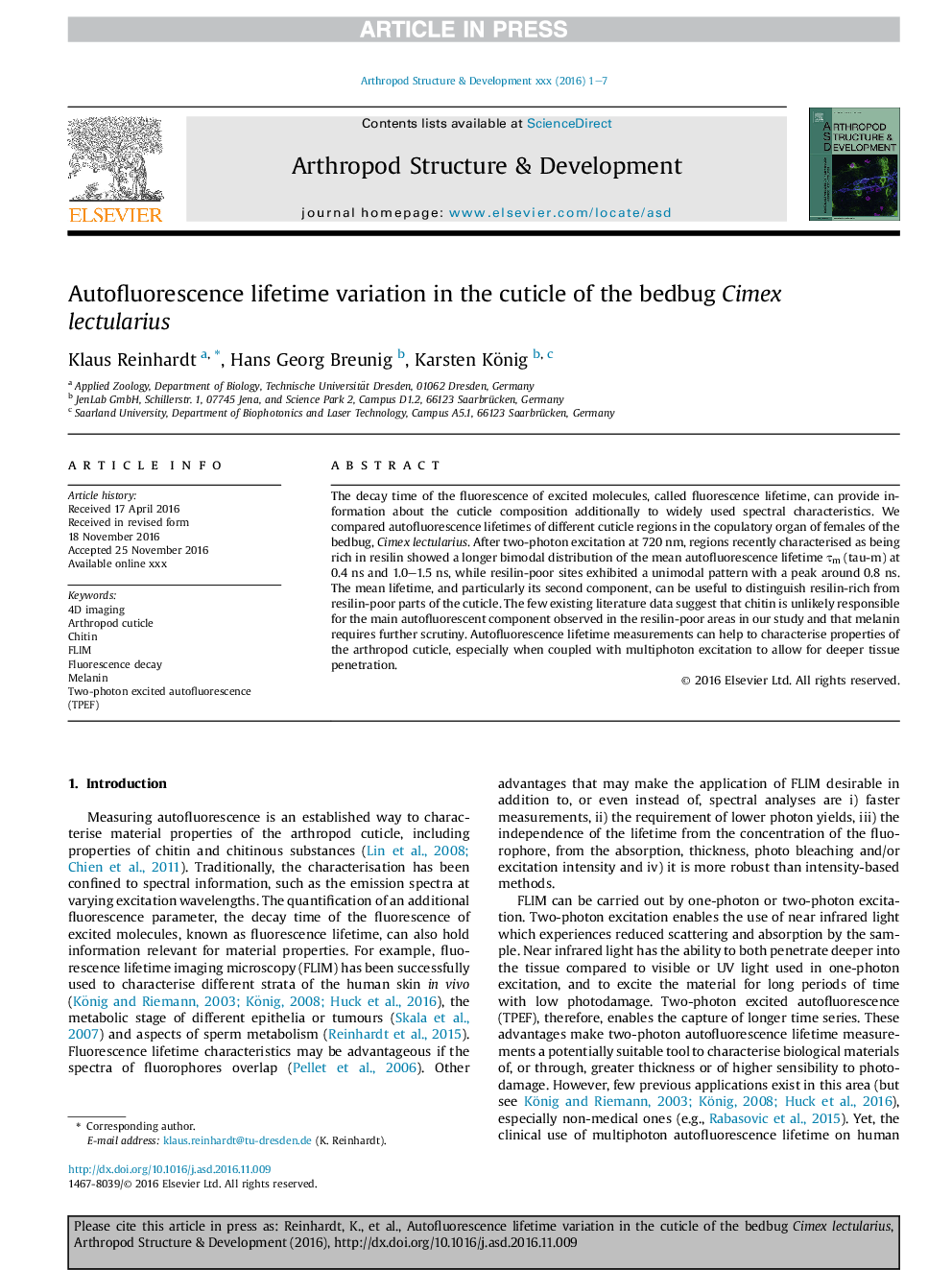| Article ID | Journal | Published Year | Pages | File Type |
|---|---|---|---|---|
| 5585072 | Arthropod Structure & Development | 2017 | 7 Pages |
Abstract
The decay time of the fluorescence of excited molecules, called fluorescence lifetime, can provide information about the cuticle composition additionally to widely used spectral characteristics. We compared autofluorescence lifetimes of different cuticle regions in the copulatory organ of females of the bedbug, Cimex lectularius. After two-photon excitation at 720Â nm, regions recently characterised as being rich in resilin showed a longer bimodal distribution of the mean autofluorescence lifetime Ïm (tau-m) at 0.4Â ns and 1.0-1.5Â ns, while resilin-poor sites exhibited a unimodal pattern with a peak around 0.8Â ns. The mean lifetime, and particularly its second component, can be useful to distinguish resilin-rich from resilin-poor parts of the cuticle. The few existing literature data suggest that chitin is unlikely responsible for the main autofluorescent component observed in the resilin-poor areas in our study and that melanin requires further scrutiny. Autofluorescence lifetime measurements can help to characterise properties of the arthropod cuticle, especially when coupled with multiphoton excitation to allow for deeper tissue penetration.
Related Topics
Life Sciences
Agricultural and Biological Sciences
Insect Science
Authors
Klaus Reinhardt, Hans Georg Breunig, Karsten König,
